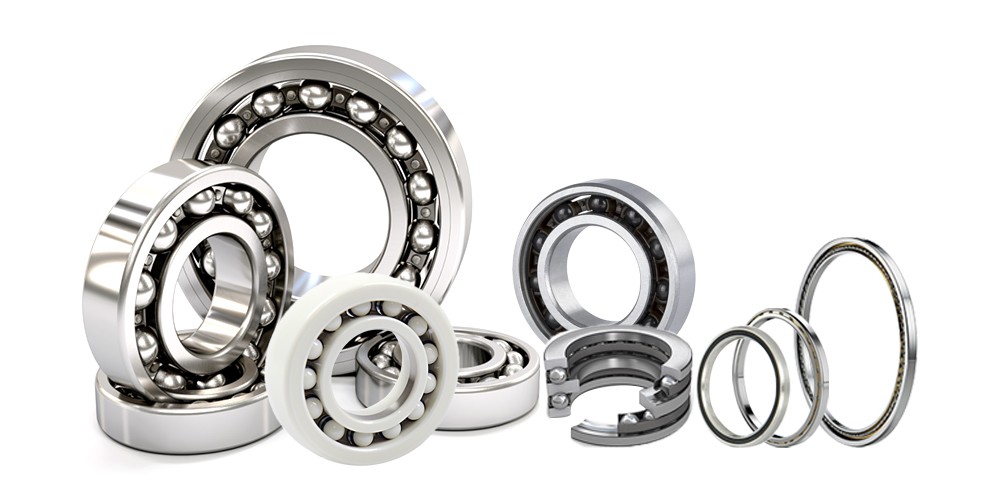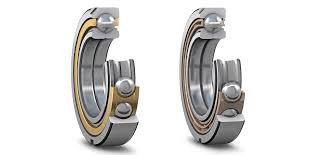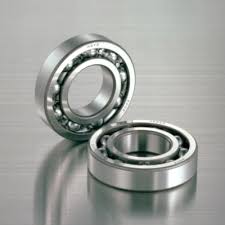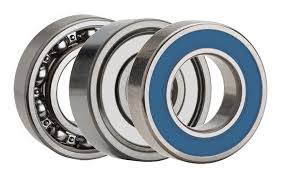Introduction
Whether you’re an engineer, a DIY enthusiast, or just curious about mechanical components, you’ve likely come across ball bearings. They may seem small, but they play a huge role in reducing friction and supporting loads in a wide range of machines. The size of ball bearings balls is a key factor in how they perform. Different applications require different sizes, and choosing the wrong one can lead to inefficiency or even equipment failure.
In this article, we’ll dive deep into the world of Bearing Dealers Near Me and explore how size impacts their functionality, how to measure them, and why it matters. Ready to roll? Let’s get started.
1. What Are Ball Bearings?
Before we get into sizes, it’s important to understand what ball bearings actually are. At their core, ball bearings consist of several balls that sit between two rings (called races). The balls enable smooth motion between these rings by reducing friction as they rotate. They are crucial in almost every mechanical system, from bicycles to industrial machinery.

Understanding Ball Bearings Balls Sizes
2. The Role of Ball Bearings Balls
The balls in a ball bearing are more than just round objects. They’re the primary components that allow the bearing to function smoothly. When a load is applied, these balls bear the weight, allowing the inner and outer rings to rotate without much friction. It’s the Bearing Dealers in Lahore that make everything move efficiently, providing both radial and axial support.
3. Why Size Matters
The size of the ball bearings balls can significantly influence the bearing’s performance. Larger balls can handle more load but rotate slower, while smaller balls enable faster rotations but support less weight. It’s a balance between speed and strength, and the right choice depends on your application. For example, a machine that needs high-speed operation will typically use smaller balls, whereas heavy machinery may require larger ones.
4. Common Sizes of Ball Bearings Balls
Ball bearings come in a variety of sizes, but there are some standard measurements you’ll often encounter:
- Miniature Sizes (0.5 mm – 6 mm): These tiny balls are used in devices like small motors and precision instruments.
- Small Sizes (6 mm – 20 mm): Commonly found in household appliances, skateboards, and bicycles.
- Medium Sizes (20 mm – 50 mm): Used in automotive parts and industrial machinery.
- Large Sizes (50 mm and above): Found in heavy-duty equipment like cranes and construction machines.
Each of these size categories serves a unique purpose, and understanding their roles can help you make better decisions when choosing ball bearings balls.

ball bearings balls
5. How to Measure Ball Bearings Balls Sizes
So, how do you actually measure the size of ball bearings balls? The key dimension is the diameter of the ball. You can measure this using a caliper, which will give you an accurate reading in either millimeters or inches. The diameter directly impacts how the ball bearing will fit into its housing and how it will perform under load.
Another important measurement is the size of the races (the rings that the balls sit between). The size of these races will determine how many balls are used in the bearing and what size they should be.
6. The Impact of Size on Bearing Load
Larger ball bearings balls can carry more load because their surface area is greater. This makes them ideal for applications where strength is more important than speed, such as in industrial machines that carry heavy loads. On the other hand, smaller balls are perfect for applications where speed and precision are essential, like in electric motors or high-speed drills.
7. The Influence of Size on Speed
Smaller ball bearings balls are lighter and have less rolling resistance, allowing for faster rotation. This is why you’ll find smaller ball bearings in devices that require high-speed operation. However, they can’t handle as much load as larger balls. It’s all about finding the right balance for your specific needs.
8. Materials Used in Ball Bearings Balls
While size is crucial, the material used to make the ball bearings balls also plays a significant role in their performance. Common materials include:
- Steel: The most common material, known for its durability and ability to handle heavy loads.
- Ceramic: Lightweight and ideal for high-speed applications, ceramic balls are corrosion-resistant and produce less friction.
- Plastic: Used in lighter applications where noise reduction and resistance to chemicals are important.
Each material has its own strengths and weaknesses, and the size of the ball bearings balls will also influence which material is the best fit.
9. How Size Affects Durability
Larger ball bearings balls tend to be more durable because they distribute the load over a greater surface area. This makes them less prone to wear and tear in heavy-duty applications. However, smaller balls, especially those made from durable materials like ceramic, can still offer excellent durability in applications where speed is more important than load capacity.
10. Custom Sizes for Specialized Applications
In some cases, standard sizes of ball bearings balls won’t meet the specific needs of an application. Custom sizes can be manufactured to precise specifications, ensuring the bearing performs optimally in unique or demanding conditions. For instance, aerospace applications often require non-standard sizes due to the high levels of stress and extreme conditions the bearings must endure.
11. Industry-Specific Uses of Ball Bearings Balls
Different industries use different sizes of ball bearings balls depending on their specific needs. For instance:
- Aerospace: High precision and small sizes for fast, efficient movement.
- Automotive: Medium to large sizes for durability and load-bearing capacity.
- Medical Devices: Miniature sizes for delicate, precise operations.
Understanding the typical ball sizes in each industry can help you determine which ball bearings are best suited for your application.
12. The Relationship Between Size and Friction
The size of the ball bearings balls also impacts friction levels. Larger balls tend to create more friction due to their greater surface contact, whereas smaller balls reduce friction but may not be able to support heavy loads. This is why it’s essential to match the ball size to the operational requirements of your machinery.
13. Replacement and Maintenance Considerations
Over time, the ball bearings balls may wear out, particularly in high-load or high-speed applications. When replacing them, it’s crucial to match the exact size and material to ensure smooth operation. Regular maintenance and lubrication can extend the life of the balls, but when it’s time for a replacement, knowing the size is key.
14. How Size Influences Noise Levels
Another often overlooked factor is the noise generated by ball bearings balls. Larger balls may create more noise due to greater friction, whereas smaller, high-precision balls can help reduce operational noise, making them suitable for quieter environments like medical devices or high-end electronics.
15. Future Trends in Ball Bearings Sizes
As technology advances, there’s a growing trend toward miniaturization, particularly in industries like electronics and robotics. This means we’ll likely see more demand for smaller ball bearings balls, as well as innovations in materials and designs to further enhance their performance in tiny, high-speed applications.
Conclusion
The size of ball bearings balls plays a vital role in their performance across various industries. Whether you need a ball bearing for a high-speed application or a heavy-load machine, selecting the right size is crucial. From measuring the diameter to considering the material and load requirements, every factor plays into the effectiveness of the bearing. As we move into the future, advancements in both size and material will continue to push the boundaries of what ball bearings can do.
FAQs
- What is the most common size for ball bearings balls?
The most common sizes range from 6 mm to 20 mm, often found in household appliances, bicycles, and automotive parts. - How do I measure ball bearings balls sizes?
You can measure the diameter of the balls using a caliper. Accurate measurement is essential for ensuring the bearing fits its intended use. - Do larger ball bearings balls last longer?
Larger balls can handle more load and distribute stress more evenly, making them more durable in heavy-duty applications. - What material is best for ball bearings balls?
Steel is the most common material for strength and durability, but ceramic is preferred for high-speed applications due to its light weight and corrosion resistance. - Can I replace ball bearings balls with different sizes?
No, replacing ball bearings balls with different sizes can cause the bearing to function improperly and may lead to equipment failure.
For more information: Contact Us SBs



0 Comments